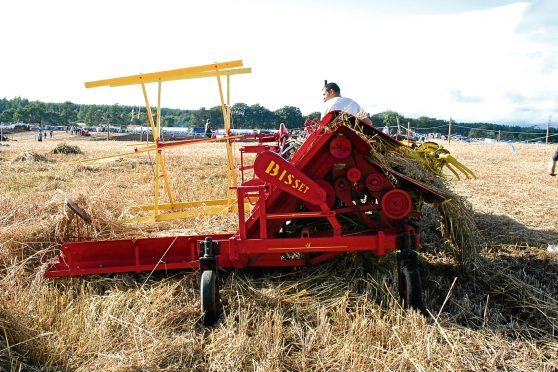This year the heavy localised but incessant downpours have badly affected the harvest in many areas across Scotland.
However when the sun does come out to play and the wind dries off the crop the modern combine harvester can munch through the crop at an incredible rate.
Huge areas can be harvested in a short time by a few people.
A harvest like this 70 years ago would not have been fun.
Firstly the wet ground conditions would make life hard for the binder operators as land wheels would fail to turn in sodden ground preventing drive to all the cutting and binding mechanisms.
Tangled crops would then wrap round the horn at the end of the cutter bar and once through the buncher sheaves would be tangled to the ones in front and behind the one being tied.
Then they had to be stooked and hopefully ripened before they were dry enough to cart home.
Prolonged wet spells meant the re-setting of stooks and the call from the farm grieve in the morning was “for those with glazed jackets to go out and re-set stooks and those without glazed jackets to just go out and help them”.
A lack of a weather window to ripen and finally cart the sheaves homes for stacking led to rapid reductions in yield, quality and ultimately saleability, thus low profitability.
This in turn led to low morale and short tempers among farmers and their staff.
As the days marched on the length of daylight decreased and dampness on dry evenings came in earlier compounding the problem.
Ironically the arrival of the combine put the season back further as the crop had to be fully ripened before harvest commenced.
The old adage of binder ripe in that the crop was still slightly green before it was cut to ripen in the stook was out of date.
Despite the later start to harvest I don’t think anyone would like a return to the harvests of old except when the binder comes out at working events.
Yes all hail the combine.
